#KSC Crystals
Text
Judy Hall's Crystal Collection
Embark on an enchanting journey with Judy Hall's personal crystal collection, now available on eBay!
Each crystal, cherished by Judy Hall, radiates a unique allure and energy, offering you a chance to own a piece of her magical world.
Explore our listings to bring these transformative stones into your space, imbued with the wisdom and magic of Judy Hall's renowned work.
Stay tuned as we continuously unveil this remarkable collection. Follow our eBay shop to be the first to see new listings and secure your piece of crystal magic.
Let your journey into Judy Hall's crystal realm begin. Visit and follow our eBay shop here: https://www.ebay.co.uk/usr/ksccrystals
Don't miss out on the chance to own these enchanting crystals. Follow us now and be part of something truly special.
#crystal healing#healing crystals#crystals for healing#rare crystals#crystal for healing#judy hall#judy hall's crystals#crystals#ksccrystals#ksc crystals#Judy Hall's personal collection#Crystal Bible
3 notes
·
View notes
Text
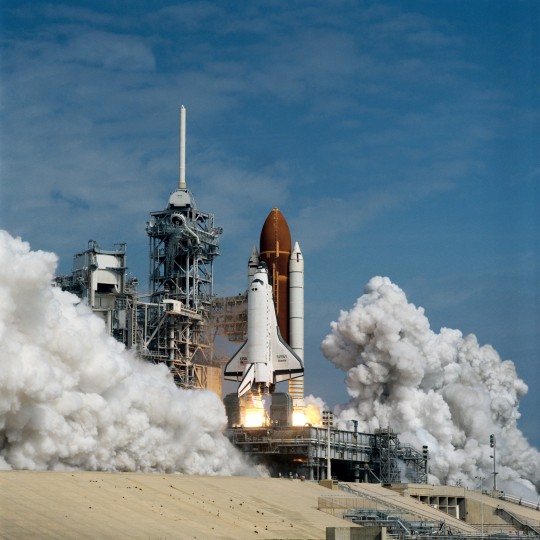


STS-37 Atlantis (OV-104) lifts off from LC-39B KSC.
"Aboard the Space Shuttle Atlantis, the STS-37 mission launched April 5, 1991 from launch pad 39B at the Kennedy Space Center in Florida, and landed back on Earth April 11, 1991. The 39th shuttle mission included crew members: Steven R. Nagel, commander; Kenneth D. Cameron, pilot; Jerry L,. Ross, mission specialist 1; Jay Apt, mission specialist 2; and Linda M. Godwin, mission specialist 3. The primary payload for the mission was the Gamma Ray Observatory (GRO). The GRO included the Burst and Transient Experiment (BATSE); the Imaging Compton Telescope (COMPTEL); the Energetic Gamma Ray Experiment Telescope (EGRET); and the Oriented Scintillation Spectrometer Experiment (OSSEE). Secondary payloads included Crew and Equipment Translation Aids (CETA); the Ascent Particle Monitor (APM); the Shuttle Amateur Radio Experiment II (SAREXII), the Protein Crystal Growth (PCG); the Bioserve Instrumentation Technology Associates Materials Dispersion Apparatus (BIMDA); Radiation Monitoring Equipment III (RMEIII); and Air Force Maui Optical Site."
Date: April 5, 1991
NASA ID: S37-S-007, 9130275, 9130274
#STS-37#Space Shuttle#Space Shuttle Atlantis#Atlantis#OV-104#Orbiter#NASA#Space Shuttle Program#April#1991#Kennedy Space Center#Florida#my post#LC-39B
48 notes
·
View notes
Link
Check out this listing I just added to my Poshmark closet: Stunning 925 Sterling Silver Rose Quartz Garnet Cuff Bracelet.
0 notes
Link
On Oct. 29, 1998, NASA astronaut John H. Glenn made history again when he returned to space aboard space shuttle Discovery’s STS-95 mission, nearly 37 years after becoming the first American in orbit during his February 1962 Friendship 7 mission. The seven-member STS-95 crew consisted of Commander Curtis L. Brown, Pilot Steven W. Lindsey, Mission Specialists Stephen K. Robinson, Dr. Scott E. Parazynski, and Pedro F. Duque of the European Space Agency, and Payload Specialists Dr. Chiaki Mukai of the National Space Development Agency of Japan, now the Japan Aerospace Exploration Agency, and Glenn, who at age 77 became the oldest person to orbit the Earth, a record that stands to this day. During the nine-day mission, they conducted more than 80 experiments, many of them to study how exposure to weightlessness might relate to the aging process. Left: The STS-95 crew during their introductory press conference. Right: President William J. “Bill” Clinton introduces the STS-95 crew, including Senator John H. Glenn, during a ceremony at NASA’s Johnson Space Center in Houston. Glenn, whom NASA essentially grounded after his historic 1962 mission for fear of losing a national hero in a spaceflight accident, had always dreamed of returning to space. Upon learning about the physiological changes that occur during spaceflight, and how they somewhat resemble those brought about by aging, now Senator Glenn began lobbying NASA Administrator Daniel S. Goldin for an opportunity to put that theory to the test, by volunteering himself as a subject. Goldin agreed in principle, providing Glenn passed the same physicals as all the other astronauts and that the flight included valuable peer-reviewed research. Glenn did, and teams at NASA working with the National Institutes of Health’s National Institute on Aging to put together a research program of experiments to study bone and muscle loss, balance disorders, sleep disturbances, and changes in the immune system. In addition, the mission conducted other experiments in fields such as materials processing, protein crystal growth, cell biology, and plant growth. Also part of the mission, the SPARTAN 201-5 free-flyer pallet carried instruments to study the Sun’s corona and the solar wind. On Jan. 16, 1998, NASA announced that Glenn would fly as a payload specialist on STS-95. On Feb. 13, the agency announced the rest of the STS-95 crew, who held a press conference at NASA’s Johnson Space Center (JSC) on Feb. 20, coincidentally the 36th anniversary of Glenn’s Friendship 7 flight. During a visit to JSC on April 14, President William J. “Bill” Clinton introduced the STS-95 astronauts. Left: STS-95 astronauts Steven W. Lindsey, seated left, and Curtis L. Brown; Scott E. Parazynski, standing left, Stephen K. Robinson, Chiaki Mukai of the National Space Development Agency of Japan, now the Japan Aerospace Exploration Agency, Pedro F. Duque of the European Space Agency, and John H. Glenn. Middle: The STS-95 crew patch. Right: Liftoff of space shuttle Discovery on the STS-95 mission, returning Glenn to orbit. Space shuttle Discovery’s 25th liftoff took place at 2:19 p.m. EDT on Oct. 29, 1998, from Launch Pad 39B at NASA’s Kennedy Space Center (KSC) in Florida, carrying a double Spacehab module filled with scientific equipment. Brown, making his fifth trip into space and second as commander, and Pilot Lindsey on his second launch, monitored Discovery’s systems as they climbed into orbit, assisted by Mission Specialist Parazynski, a physician making his third trip into space, serving as the flight engineer. Mission Specialist Duque accompanied them on the flight deck. Mission Specialist Robinson, on his second mission, and Payload Specialists Mukai, also a physician and on her second trip to space, and Glenn experienced launch in the shuttle’s middeck. Left: View of the Spacehab module and the Canadian robotic arm in Discovery’s payload bay. Middle: The crew’s first view of the interior of the Spacehab module. Right: Chiaki Mukai, left, and Stephen K. Robinson begin activating the Spacehab. Upon reaching orbit, the crew opened the payload bay doors, thus deploying the shuttle’s radiators. Shortly after, the crew opened the hatch from the shuttle’s middeck, translated down the transfer tunnel, and entered Spacehab for the first time, activating the module and turning on the first experiments. These included the life sciences experiments that Glenn conducted to compare the effects of weightlessness and aging. Left: Physician astronaut Dr. Scott E. Parazynski, left, prepares to draw a blood sample from John H. Glenn. Middle: Glenn, left, and Parazynski prepare to centrifuge the collected blood sample. Right: Glenn, instrumented for a sleep study, prepares to begin his sleep period. Left: The STS-95 astronauts use the Canadian-built Remote Manipulator system, or robotic arm, to release the SPARATAN 201-5 free flyer. Middle: Stephen K. Robinson operates the RMS to retrieve the SPARTAN after its four-day autonomous flight. Right: Robinson places the SPARTAN back in the shuttle’s payload bay. On the mission’s second day, the crew deployed the PANSAT, a small experimental communications satellite built by the Naval Postgraduate School in Monterey, California. Later in the day, Robinson used the Canadian-built Remote Manipulator System (RMS) or robotic arm to grapple the SPARTAN free flyer. He removed it from its cradle in the payload bay and deployed it for its four-day independent mission. It successfully completed its autonomous flight, traveling up to 30 miles from the shuttle. On flight day 6, Robinson used the RMS to capture SPARTAN and placed it back in its cradle in the payload bay. Left: Stephen K. Robinson processes a sample in the Advanced Gradient Heating Facility (AGHF). Right: John H. Glenn operates the Osteoporosis Experiment in Orbit (OSTEO) payload investigating the behavior of bone cells in microgravity. Left: Scott E. Parazynski prepares an experiment in the Microgravity Science Glovebox. Right: Chiaki Mukai examines plants grown in the Biological Research in Canisters (BRIC) experiment. For the remainder of the mission, the seven-member crew busied itself with conducting the 80 experiments in the shuttle’s middeck, the Spacehab, and in the payload bay. Left: Chiaki Mukai operates the Vestibular Function Experiment Unit (VFEU) investigation the vestibular systems of toadfish. Middle: John H. Glenn removes cartridges from the Advanced Separation (ADSEP) experiment. Right: Steven Lindsey operates the BIOBOX used to store biological samples. Left: Pedro F. Duque operates the Microencapsulation Electrostatic Processing System (MEPS) experiment. Middle: Chiaki Mukai operates the high-definition camcorder provided by the Japanese company NHK. Right: John H. Glenn takes one of the 2,500 Earth observation images obtained during the STS-95 mission. A selection of the Earth observation photographs taken by the STS-95 crew. Left: The Hawaiian Islands. Middle left: Houston. Middle right: Florida. Right: Yemen and the Horn of Africa. Left: STS-95 astronauts, clockwise from lower left, Pedro F. Duque, Chiaki Mukai, Scott E. Parazynski, John H. Glenn, Curtis L. Brown, Steven W. Lindsey, and Stephen K. Robinson. Middle: Brown, left, and Lindsey review entry checklists before donning their launch and entry suits in preparation for returning to Earth. Right: Mukai, left, and Duque help Glenn, center, put on his launch and entry suit for reentry. On their last day in space, the crew finished the experiments, closed up the Spacehab module, donned their launch and entry suits, and strapped themselves into their seats to prepare for their return to Earth. They fired the shuttle’s Orbital Maneuvering System engines to begin the descent from orbit. Brown piloted Discovery to a smooth landing at KSC’s Shuttle Landing Facility on Nov. 7, after completing 134 orbits around the Earth in 8 days, 21 hours, and 44 minutes. The astronauts exited Discovery about one hour after landing and immediately began their postflight data collection to measure their immediate physiological responses after returning to a 1 g environment. Ground crews towed Discovery to the Orbiter Processing Facility to begin preparing it for its next mission, STS-96, the first shuttle docking to the International Space Station. The astronauts returned to Houston’s Ellington Field, where a large crowd of well-wishers, including government officials and the media, welcomed them home. Left: Space Shuttle Discovery lands at NASA’s Kennedy Space Center (KSC) in Florida to end the nine-day STS-95 mission. Middle: Dignitaries including Isao Uchida, president of Japan’s National Space Development Agency, KSC Director Roy D. Bridges, and NASA Administrator Daniel S. Goldin greet the returning STS-95 crew after their landing. Right: Dignitaries including Houston Mayor Lee P. Brown, left, U.S. Representative Sheila Jackson Lee, U.S. Senator Kay Bailey Hutchison, Administrator Goldin, and Johnson Space Center Director George W.S. Abbey greet the STS-95 crew at Ellington Field in Houston. Left: U.S. Senator Kay Bailey Hutchison addresses the crowd at Ellington Field gathered to welcome the STS-95 crew back to Houston. Right: NASA Administrator Daniel S. Goldin addresses the crowd at Ellington as the STS-95 astronauts listen. Enjoy the crew-narrated video about the STS-95 mission. Explore More 5 min read 25 Years Ago: Launch of Deep Space 1 Technology Demonstration Spacecraft Article 6 days ago 7 min read 30 Years Ago: The STS-58 Spacelab Life Sciences-2 Mission Article 2 weeks ago 11 min read 55 Years Ago: Nine Months Before the Moon Landing Article 2 weeks ago
0 notes
Text
Perseverance Kicks Off Elaborate Effort to Bring Mars Rocks to Earth
https://sciencespies.com/nature/perseverance-kicks-off-elaborate-effort-to-bring-mars-rocks-to-earth/
Perseverance Kicks Off Elaborate Effort to Bring Mars Rocks to Earth
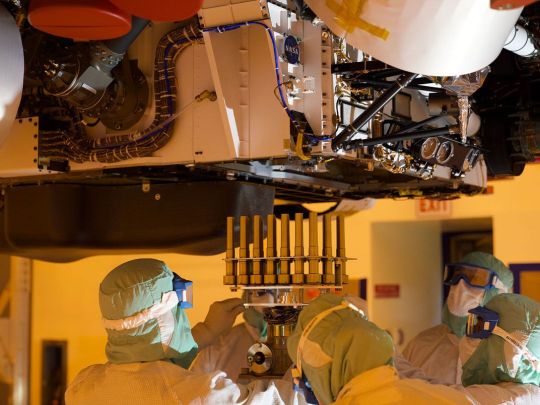
SMITHSONIANMAG.COM |
Feb. 22, 2021, 8 a.m.
The Perseverance Rover is about to gather a rock collection with no equal. On February 18, the rover landed in Mars’ Jezero Crater to gather rock samples and begin searching for signs of ancient microbial life in visible deltas where water once flowed. The rover is set to fill 38 glass tubes with samples of Mars’ surface, then send them to Earth like pebbly postcards, souvenirs to show scientists where it has been. But the samples will need to travel a complicated delivery route to get to their final destination.
The mission, called Mars Sample Return, will require two more rocket launches from Earth, currently slated for 2026 and 2031, and one rocket launch from Mars, which could become the first launch from another planet. If the plan runs smoothly, the mission will provide the first cache of rock samples from another planet—complete with details about when, where and how they were collected. The mission will culminate with the samples crash-landing on the mudflats of the Utah Test and Training Range. Scientists on Earth will then be able to scour the samples for details about the Red Planet’s climate, geological history and even subtle signs of life.
“It’s something that the entire Mars exploration community is really excited about and looking forward to,” says David Spencer, the Mars Sample Return campaign mission manager at NASA’s Jet Propulsion Laboratory. “And Perseverance is that critical first step.”
Perseverance is loaded with scientific equipment to help it hunt for signs of life, like SHERLOC, which uses an ultraviolet laser to observe some details of minerals, and SuperCam, which can spot organic compounds at a distance. But SHERLOC is about the size of a large hardcover book, and SuperCam is the size of two stacked shoeboxes. To study a rock’s age, texture, mineral makeup or the climate that it formed under, scientists need access to equipment that’s closer to the size of a microwave or refrigerator.
“These instruments could not be on a rover, they are too large and too sensitive and too high maintenance,” writes Rutgers University planetary scientist Juliane Gross, now the deputy curator of Apollo moon samples at NASA, in an email. “But we need to use these instruments if we want to understand how these rocks form.”

A tray holding 39 sample tubes is installed into the Perseverance rover.
(NASA / JPL-Caltech / KSC)
Over 30 years ago, an international panel of scientists wrote a report that first detailed their interest in a Mars sample return mission over 30 years ago. The scientific community knew then that a quick grab-and-go mission for one sample, as has recently been accomplished from asteroids, wouldn’t be worthwhile on Mars, given the of an interplanetary mission. (Last July, NASA and the European Space Agency estimated it would cost about $7 billion.)
A useful sample return mission from Mars requires grabbing a bunch of samples from many scientifically interesting locations. “Rocks and minerals record the conditions of these environment from which they crystallized,” says Gross. “So, bringing back these samples that span a range in age and crystallized at different times in Mars history, we can start to answer some of these fundamental questions.”
Perseverance will spend its first Martian year, the equivalent of 687 Earth days, in Jezero crater compacting half-ounce samples of rock and regolith into some of its glass tubes. Most of the samples will be gathered in pairs. At some point during that first year, Perseverance will drop a cache of samples in Jezero crater—while keeping the second set of samples on board.
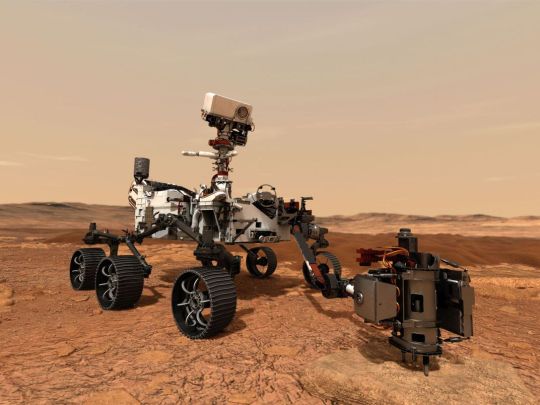
Perseverance uses its drill to core a rock sample on Mars in this illustration.
(NASA / JPL-Caltech)
If the rover is still in good working order after one Martian year, then NASA will have a chance to extend the mission. The rover will roll to the edge of Jezero crater and gather more samples from both inside the crater and along its ridge, also in pairs. Once the rover fills the last of its sample tubes, it will drop a second cache on Mars’ surface—again keeping the second set of samples stowed.
When Perseverance puts sample tubes down, it can’t pick them back up. The rover will drive away, leaving glass tubes of precious geological samples laying around on the surface of a distant planet. That might sound risky, but NASA has a plan.
“Once we place them on the surface, we will thoroughly document every tube, and where it’s located relative to its surroundings,” says Spencer. NASA will use local landmarks for on-the-ground references, as well as orbital measurements, to track the tubes. “So we’ll know, down to the centimeter level, where every tube is on the surface of Mars.”
Perseverance is also responsible for scoping out the landing site for the next phase of the sample return mission, the Sample Retrieval Lander.
The Sample Retrieval Lander is slated to depart from Earth in 2026, and it will be packing the Sample Fetch Rover, which will be designed and built by the European Space Agency. The five-foot-long rover will have four wheels for speed, solar panels for power and one job: gather Perseverance’s samples to send to Earth.
The rover will drive to the coordinates of Perseverance’s caches and use machine vision and artificial intelligence technologies to recognize and collect the sample tubes on Mars’ surface autonomously using a robotic arm—which it can do even if the glass tubes are covered by several years-worth of dust.
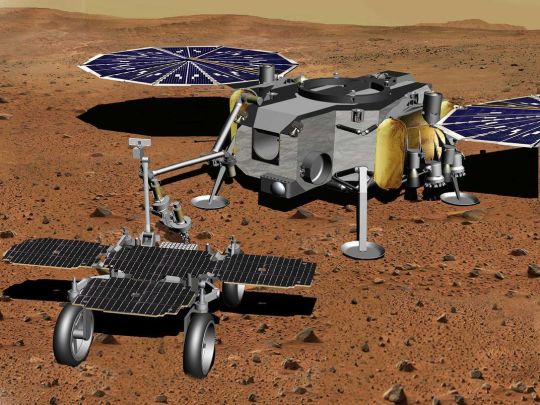
A robotic arm transfers samples of Martian rock and soil from a fetch rover onto a lander in this illustration.
(NASA / JPL-Caltech)
And if something goes wrong with the Fetch rover, Perseverance has its backup samples.
“The most challenging aspect of Mars Sample Return is just the long chain of events that all need to be successful,” says Spencer. “We’re trying to build in robustness as much as we can. One aspect of that is the Perseverance rover will be capable of delivering samples directly to the SRL [Sample Retrieval Lander].”
Once the sample tubes reach the Sample Retrieval Lander, either from Perseverance or the Fetch rover, they will be packaged into a soccer ball-sized container called the Orbiting Sample Canister. The canister will not be able to hold all of the samples collected; it can only hold one cache. Glass tubes from the second group, which will include rocks from inside and along the edge of Jezero crater, will be first in line to leave Mars because they will have a greater variety of samples and therefore more scientific value, Spencer says.

NASA’s Mars Ascent Vehicle, which will carry tubes containing rock and soil samples, is launched from the surface of Mars in this illustration.
(NASA / JPL-Caltech)
The Orbiting Sample Canister will be loaded into the Sample Retrieval Lander’s Mars Ascent Vehicle, which may become the first rocket launched from a planet other than Earth. It will ferry the canister into Mars orbit, where the canister could circle the planet for up to a decade.
To finally deliver the samples to Earth, the European Space Agency plans to launch the Earth Return Orbiter mission in 2031. The agency plans to put a satellite in Mars orbit that can intercept the canister and contain it in another layer of protection, in case it’s covered in Mars dust. Then the satellite will fly back to Earth with its quarry, transfer the canister to an Earth entry capsule and drop it on Utah’s mudflats, where giddy geologists will retrieve it.
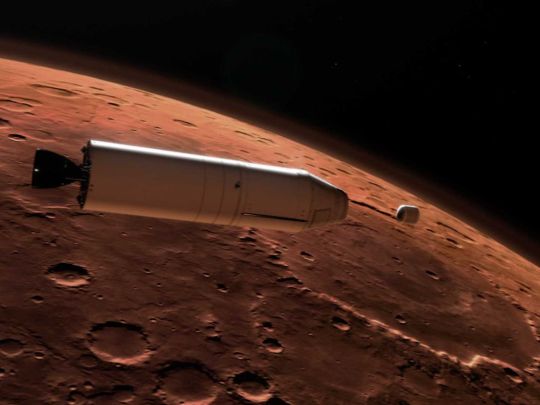
The Mars Ascent Vehicle releases a sample container high above the Martian surface.
(NASA / JPL-Caltech)
NASA and the European Space Agency haven’t yet decided how they will distribute the Mars samples among the scientific community. When Apollo astronauts brought back samples from the moon, NASA took proposals from scientists around the world for moon rock-based research projects. Those projects have illuminated the life and death of the moon’s magnetic field, the formation of the moon and Earth and the history of space weathering over billions of years.
Perseverance’s primary goal is to search for signs of fossilized life on Mars, but there is a lot to learn about Earth’s planetary neighbor no matter the results. The samples could provide insights into Mars’ history and help scientists predict Earth’s distant future. And any information about the Martian environment could help the astronauts who, someday, take humanity’s first steps on the Red Planet.
“Bringing back samples to be analyzed in Earth based laboratories is crucial for our understanding of planetary processes that have shaped our corner of the universe,” Gross says. By “bringing back these samples that span a range in age and crystallized at different times in Mars history, we can start to answer some of these fundamental questions that ultimately will help us explore Mars safely in person one day.”
#Nature
0 notes
Text
(June 15, 2020) AIAA Member Spotlight on Matthew Kuhns

Matthew Kuhns
AIAA LA-LV Member
Chief Engineer, Masten Space Systems, Inc.
I am a kid who never grew out of wanting to be an astronaut. Once I discovered you could build spaceships in addition to flying them, I was hooked. My father helped by teaching me about the planets and getting me a telescope when I was 10.
In high school my drafting teacher Mr Bartman taught me a lot of the fundamentals of engineering. He came from the SR-71 program and we were all suitably impressed. He provided me with a solid pencil and paper drafting and CAD foundation which let me get my first engineering job in college.
Education: University of Wisconsin - Madison, Engineering Mechanics 2008. Prof. Elder, Prof. Crone, and Prof. Lakes were a huge influence on helping me understand what it takes to be a good engineer.
Graduating in 2008 felt like the worst time to try to find a job in space, so I went into the aircraft industry.
PCC Airfoils - SMP Plant, Wickliffe, OH. SMP manufactures single crystal turbine blades and combustor components for jet engines.General Atomics ASI, Adelanto, CA. Propulsion R&D for the Predator C Avenger & PWC 545BM jet engine.Eaton Aerospace, Irvine, CA. Mechanical & Electrical lead for an interdisciplinary Advanced Technology team.
Masten gave me a chance to make the jump to space in 2015, and it has been a wild ride. Lots of testing, lots of rocket firings, and lots of amazing people. I started as a subsystem lead on Xephyr, Masten's reusable VTVL small sat launcher for the DARPA XS-1 program.
The last few years have been so great for innovation and opportunities in the space industry, and I hope we can all weather the Covid-19 storm together. With so many launch vehicles available now, and more soon to be available, it's really going to infuse the space economy with extra energy. Particularly in cis-lunar space, extremely optimistic that we as industry can find a way to develop a sustainable economy which can help drive a permanent lunar presence.
My current job with Masten is amazing, we work on building and flying rockets and now we are going to the moon. Working closely with NASA and their extremely skilled engineers is a continual source of inspiration. The projects we are working on will be able to increase performance and lower cost of propulsion and spacecraft hardware across the industry.
Chief Engineer, XL-1 Lunar Lander, NASA CLPS/ArtemisPI MOWS for Surviving the Lunar Night, NASA SBIR Phase I and IIPI PermiAM Transpiration Cooled Rocket Engines, NASA SBIR Phase I and IIPI Rocket Plume Deep Cratering Physics, NASA SBIR Phase I, II, and IIIPI 25k Broadsword Tipping Point, NASA Tipping Point ProgramNIAC Fellow: FAST Landing Pads for Artemis, NASA Innovative Advanced Concepts ProgramPI Artemis E-Pump Technology Demonstration Program, NASAPI E-Pump Development for Landers, NASA MSFC CAN
Patents:
High Wing Fuel Compensation System (Eaton) USPTO 62/233,660Magnetically Aligned Fuel Valve (Eaton) USPTO US20170708121A1Fluid System with Differential Pressure Control (Eaton) USPTO US62/442,624Method for Predicting Sunset Vibrancy (Skyfire) USPTO 62/097,001PermiAM: Porous AM Material for Rockets (Masten) USPTO US16/372,401
I also enjoy photographing rocket launches, both at Masten and at KSC/Vandenberg! My space photography has been published by Aviation Week, Spaceflight Insider, NASA, Spacenews, Planetary Society, and Microsoft. My broader work has been published in a few books and publications like National Geographic, have had shows in several LA area galleries.
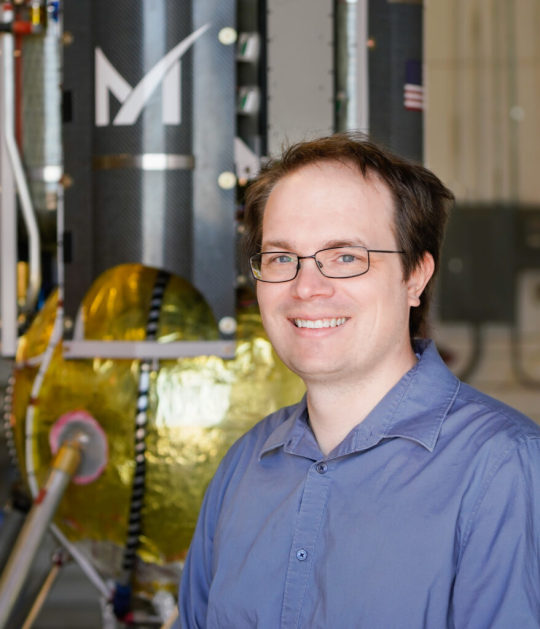
Matthew Kuhns

For fun, Ice Sat II launch at Vandenberg
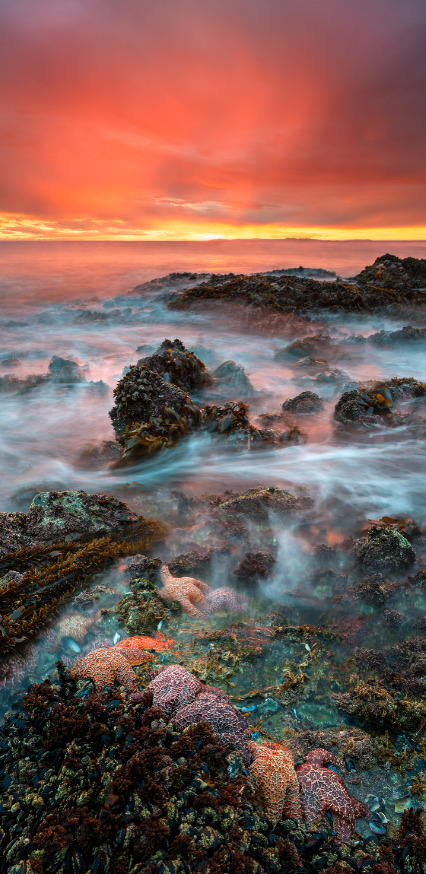
One of my landscape images
Read the full article
0 notes
Text
Lịch thi đấu bóng đá hôm nay và ngày mai 26/12/2018
Lịch thi đấu bóng đá hôm nay và ngày mai 26/12/2018
Lịch thi đấu bóng đá tối hôm nay 26/12/2018 và rạng sáng 27/12/2018
Lịch thi đấu Ngoại Hạng Anh - Ngày 26/12/2018
26/12/2018 - 19h30 - Fulham vs Wolves
26/12/2018 - 22h00 - Burnley vs Everton
26/12/2018 - 22h00 - Crystal Palace vs Cardiff City
26/12/2018 - 22h00 - Leicester City vs Man City
26/12/2018 - 22h00 - Liverpool vs Newcastle
26/12/2018 - 22h00 - Man Utd vs Huddersfield
26/12/2018 - 22h00 - Tottenham vs Bournemouth
Lịch thi đấu Ngoại Hạng Anh - Ngày 27/12/2018
27/12/2018 - 00h15 - Brighton vs Arsenal
27/12/2018 - 02h30 - Watford vs Chelsea
Lịch thi đấu Hạng Nhất Anh - Ngày 26/12/2018
26/12 21h00 - Swansea City vs Aston Villa
26/12 21h00 - Birmingham vs Stoke City
26/12 21h00 - Bolton vs Rotherham Utd
26/12 21h00 - Bristol City vs Brentford
26/12 21h00 - Leeds Utd vs Blackburn Rovers
26/12 21h00 - Middlesbrough vs Sheffield Wed.
26/12 21h00 - Millwall vs Reading
26/12 21h00 - Norwich vs Nottingham Forest
26/12 21h00 - Preston North End vs Hull City
26/12 21h00 - QPR vs Ipswich
26/12 21h00 - Sheffield Utd vs Derby County
26/12 21h00 - West Brom vs Wigan
Lịch thi đấu League One - Ngày 26/12/2018
26/12/2018 - 21h00 - Rochdale vs Blackpool
26/12/2018 - 21h00 - Fleetwood Town vs Doncaster Rovers
26/12/2018 - 21h00 - Accrington vs Shrewsbury
26/12/2018 - 21h00 - Wimbledon vs Plymouth Argyle
26/12/2018 - 21h00 - Barnsley vs Peterborough Utd
26/12/2018 - 21h00 - Burton Albion vs Wycombe
26/12/2018 - 21h00 - Coventry vs Charlton Athletic
26/12/2018 - 21h00 - Gillingham vs Portsmouth
26/12/2018 - 21h00 - Oxford Utd vs Southend
26/12/2018 - 21h00 - Scunthorpe Utd vs Luton Town
26/12/2018 - 21h00 - Sunderland vs Bradford City
26/12/2018 - 21h00 - Walsall vs Bristol Rovers
Lịch thi đấu League Two - Ngày 26/12/2018
26/12/2018 - 21h00 - Tranmere Rovers vs Morecambe
26/12/2018 - 21h00 - Notts County vs Macclesfield
26/12/2018 - 21h00 - Carlisle vs Oldham
26/12/2018 - 21h00 - Newport vs Forest Green
26/12/2018 - 21h00 - Cambridge Utd vs Crawley Town
26/12/2018 - 21h00 - Crewe Alexandra vs Lincoln
26/12/2018 - 21h00 - Exeter City vs Yeovil Town
26/12/2018 - 21h00 - Cheltenham vs Milton Keynes Dons
26/12/2018 - 21h00 - Colchester Utd vs Stevenage
26/12/2018 - 21h00 - Mansfield vs Bury
26/12/2018 - 21h00 - Northampton vs Swindon
26/12/2018 - 21h00 - Port Vale vs Grimsby
Lịch thi đấu VĐQG Italia - Ngày 26/12/2018
26/12/2018 - 18h30 - Frosinone vs AC Milan
26/12/2018 - 21h00 - SPAL 1907 vs Udinese
26/12/2018 - 21h00 - Atalanta vs Juventus
26/12/2018 - 21h00 - Bologna vs Lazio
26/12/2018 - 21h00 - Cagliari vs Genoa
26/12/2018 - 21h00 - Fiorentina vs Parma
26/12/2018 - 21h00 - Sampdoria vs Chievo
Lịch thi đấu VĐQG Italia - Ngày 27/12/2018
27/12/2018 - 00h00 - Roma vs Sassuolo
27/12/2018 - 00h00 - Torino vs Empoli
27/12/2018 - 02h30 - Inter Milan vs Napoli
Lịch thi đấu Hạng 3 Italia - Ngày 26/12/2018
26/12/2018 - 19h30 - Trapani vs Catanzaro
26/12/2018 - 19h30 - Siracusa vs SS Monopoli
26/12/2018 - 19h30 - Cavese vs AS Bisceglie
26/12/2018 - 19h30 - Casertana vs Sicula Leonzio
26/12/2018 - 19h30 - Matera vs Reggina
26/12/2018 - 19h30 - Viterbese Calcio vs Paganese
26/12/2018 - 19h30 - Vibonese vs Potenza SC
26/12/2018 - 19h30 - Virtus Francavilla vs Juve Stabia
26/12/2018 - 19h30 - FC Rieti vs Catania
Lịch thi đấu VĐQG Scotland - Ngày 26/12/2018
26/12/2018 - 21h00 - St. Mirren vs St. Johnstone
26/12/2018 - 21h00 - Aberdeen vs Celtic
26/12/2018 - 22h00 - Dundee vs Livingston
26/12/2018 - 22h00 - Hearts vs Hamilton
26/12/2018 - 22h00 - Motherwell vs Kilmarnock
26/12/2018 - 22h00 - Rangers vs Hibernian
Lịch thi đấu VĐQG Bắc Ai Len - Ngày 26/12/2018
26/12/2018 - 21h00 - Cliftonville vs Crusaders Belfast
26/12/2018 - 21h00 - Linfield vs Glentoran
26/12/2018 - 21h00 - Dungannon Swi. vs Glenavon
26/12/2018 - 21h00 - Institute vs Ards
26/12/2018 - 21h00 - Warrenpoint Town vs Newry City
26/12/2018 - 21h00 - Ballymena Utd vs Coleraine
Lịch thi đấu VĐQG Bỉ - Ngày 26/12/2018
26/12/2018 - 23h00 - Cercle Brugge vs Eupen
26/12/2018 - 23h00 - Charleroi vs Standard Liege
26/12/2018 - 23h00 - Antwerpen vs Mouscron Peruwelz
26/12/2018 - 23h00 - KSC Lokeren vs Club Brugge
26/12/2018 - 23h00 - Oostende vs Sint Truiden
26/12/2018 - 23h00 - Genk vs Gent
26/12/2018 - 23h00 - Kortrijk vs Zulte-Waregem
26/12/2018 - 23h00 - Anderlecht vs Waasland-Beveren
Lịch thi đấu VĐQG Wales - Ngày 26/12/2018
26/12/2018 - 20h30 - Llanelli vs Carmarthen
26/12/2018 - 20h30 - The New Saints vs Cefn Druids AFC
26/12/2018 - 20h30 - Bala Town vs Connah's QN
26/12/2018 - 20h30 - Aberystwyth vs Newtown AFC
26/12/2018 - 20h30 - Barry Town vs Cardiff Metropolitan
26/12/2018 - 20h30 - Caernarfon Town vs Llandudno
Lịch thi đấu VĐQG Australia - Ngày 26/12/2018
26/12/2018 - 14h50 - Adelaide Utd vs WS Wanderers
Xem nguồn tại: https://truoctran.com/lich-thi-dau-bong-da-hom-nay-va-ngay-mai-26-12-2018 Theo nguồn: https://nhandinhbongdatruoctran.blogspot.com/2018/12/lich-thi-au-bong-hom-nay-va-ngay-mai_7.html
0 notes
Text
Video Friday: Giant Robotic Chair, Underwater AI, and Robot Holiday Mischief
Your weekly selection of awesome robot videos
Image: KAIST HuboLab/Rainbow Robotics/YouTube
FX-2 Giant Human Riding Robot from KAIST HuboLab.
Video Friday is your weekly selection of awesome robotics videos, collected by your Automaton bloggers. We’ll also be posting a weekly calendar of upcoming robotics events for the next two months; here’s what we have so far (send us your events!):
IEEE IRC 2018 – January 31-2, 2018 – Laguna Hills, Calif.
HRI 2018 – March 5-8, 2018 – Chicago, Ill.
Let us know if you have suggestions for next week, and enjoy today’s videos.
DRC Hubo (and some
humans) are helping relay the Olympic torch to PyeongChang:
[ DRC Hubo ]
This is the FX-2 Giant Human Riding Robot from KAIST HuboLab and Rainbow Robotics, and that’s all I know about it.
[ Rainbow Robotics ]
Yuichiro Katsumoto, a “gadget creator” based in Singapore, wrote in to share this video of the robotic kinetic typography that he’s been working on for the last year. It’s mesmerizing.
[ Yuichiro Katsumoto ]
Thanks Yuichiro!
Oceans makeup 70% of the Earth’s surface, yet we know very little about them. MIT students taking class 2.680: Unmanned Marine Vehicle Autonomy, Sensing and Communications aim to deepen our understanding by developing artificial intelligence for use on autonomous marine vehicles. Their software is put to the ultimate test while running missions of the Charles River.
Someone should tell MIT that the Charles River is not the ocean, though.
[ MIT ]
FZI Living Lab has the best robot holiday parties EVER.
Note: Please do not try to host a party like this unless you’re a trained professional and are willing to invite me.
[ FZI Living Labs ]
Thanks Arne!
Look who’s been eating our chocolates. The Meca500, the only industrial robot that can fit in gift box. Happy Holidays!
More importantly, it can fit in a gift box along with a big pile of chocolates.
[ Mecademic ]
Robotnik brings us one of the more… unusual… holiday videos:
[ Robotnik ]
The high probability of hardware failures prevents many advanced robots (e.g., legged robots) from being confidently deployed in real-world situations (e.g., post-disaster rescue). Instead of attempting to diagnose the failures, robots could adapt by trial-and-error in order to be able to complete their tasks. In that case, damage recovery can be seen as a Reinforcement Learning (RL) problem. However, the best RL algorithms for robotics require resetting the robot and the environment to an initial state after each episode, that is, the robot is not learning autonomously. In addition, most of the RL methods for robotics do not scale well with complex robots (e.g., walking robots) and either cannot be used at all or take too long to converge to a solution (e.g., hours of learning). In this paper, we introduce a novel learning algorithm called “Reset-free Trial-and-Error’” (RTE) that (1) breaks the complexity by pre-generating hundreds of possible behaviors with a dynamics simulator of the intact robot, and (2) allows complex robots to quickly recover from damage while completing their tasks and taking the environment into account.
By Konstantinos Chatzilygeroudis, Vassilis Vassiliades, and Jean-Baptiste Mouret. Full paper at the link below.
[ arXiv ]
Several NCCR Robotics laboratories have been collaborating on this integrative demo project, targeted at rescue missions.
[ NCCR Robotics ]
These small bots are capable of doing useful task by way of external actuation. Shown here are 1 and 2mm “bots”. Applications include micro transportation, micro manipulation and more. Potential use cases include crystal harvesting, manufacture of bio sensors, lab on chip, cell manipulation and surgery.
[ University of Sydney ACFR ]
Simone Giertz takes on bubble wrap with a $100k robot arm.
Er, I really feel like the Kuka arm should just be totally wrecking this competition. Why is is moving sooo slooowly?
[ Simone Giertz ]
CMU senior undergrad Alan Jaffe demos his final project, which was to getting a robotic arm to assist a virtual disabled person who needs help with eating.
[ CMU ]
Why do I have to say this every year? If you are a company that makes robots that can do cool things, don’t make a holiday card using animations of your robots doing cool things that they should be able to do in real life.
[ Yaskawa ]
This video shows the ability of iCub to work safely in sharing environment with human. Taking inspiration from peripersonal space representations in humans, we present a framework on the iCub humanoid robot that dynamically maintains such a protective safety zone, composed of the following main components: an architecture for human keypoints estimation in 3D, an adaptive peripersonal space representation, and a controller dynamically incorportating human keypoints as obstacles into a reaching task.
The video is based on the work presented in Nguyen, P. D.; Hoffmann, M.; Roncone, A.; Pattacini, U. & Metta, G. (2018), Compact real-time avoidance on a humanoid robot for human-robot interaction, in ’Proceedings of the 2017 ACM/IEEE International Conference on Human-Robot Interaction (HRI)’. [conditionally accepted].
I hope you gave that iCub a proper hug after all of those avoidance experiments.
[ iCub ]
TJBot is an open-source platform built around the Raspberry Pi for exploring artificial intelligence (AI) with IBM Watson. Create recipes on IBM Cloud to hold conversations with TJBot, ask it to dance, turn on a light, or analyze a Tweet.
Watson, tell me a joke that is actually funny.
[ SparkFun ]
TinyWhoop FPV drones look like they’re way more fun to play with than their size would suggest:
You can get a complete ready-to-fly TinyWhoop kit (including the FPV goggles) for just $350.
[ TinyWhoop ] via [ Team BlackSheep ]
How close are we to a Star Wars droid reality? That’s the question we posed to Paul G. Allen’s technical advisor Jeff Kramer. As a Star Wars fan with an extensive background in robotics, he knows a thing or two about beloved characters like C-3P0, R2-D2 and BB-8 and how some of their technological advances can be seen in present day robotics.
[ Vulcan ]
In case you don’t get enough Agility Robotics video by reading this blog, here’s another 12 minutes worth of footage and interviews from Motherboard:
[ Motherboard ]
The U.S. Army Research Laboratory is working on a concept to 3-D print custom unmanned aircraft systems on-demand. Join us for an inside look at a project that has Soldiers and Marines using science and technology to bring important mission capabilities to the fight.
[ ARL ]
Kurt Leucht performs exploration research and technology development for NASA KSC, and he’s one of the very few people legit qualified to give a talk entitled “Writing Apps For Mars!”
Mobile app developers and other software developers typically take great pride in their final products. But how does the onboard software for a Mars rover, for example, compare to a good mobile app or business app?
Is it simple and easy to use? Is it efficient? What platform does it run on? How does it typically perform? Does it work seamlessly offline? What language is it written in? Is it supportable and upgradable? Is it designed with the user in mind? How is it developed and tested?
This presentation will explore all these questions and more in an effort to understand the similarities and the major differences between typical business software and software that is designed for the NASA Mars rovers.
[ Oredev ]
Thanks Kurt!
In the latest episode of Robots in Depth, Per Sjöborg interviews Ian Bernstein, of Sphero and now Misty Robotics:
Ian Bernstein is the founder of several robotics companies including Sphero. Hi shares his experience from completing 5 successful rounds of financing, raising 17 million dollars in the 5th one. He also talks about building a world-wide distribution network and the complexity of combining software and hardware development. We then discuss what is happening in robotics and where future successes may come from, including the importance of Kickstarter and Indiegogo. If you view this episode, you will also learn which day of the week people don’t play with their Sphero :-).
[ Robots in Depth ]
Video Friday: Giant Robotic Chair, Underwater AI, and Robot Holiday Mischief syndicated from http://ift.tt/2Bq2FuP
0 notes
Text

We have gone bracelet mad today, with over twenty new ones to choose from.
These are a lovely gift, and great as a stocking filler for Christmas.🎄
Please follow this link to see our wide range: https://www.ksccrystals.com/crystal-bracelets-90-c.asp
#crystals for healing#healing crystals#crystals that heal#rare crystals#crystal therapy#crystals for sale uk#high vibration crystals#crystals for crystal healing#ksc crystals#keith birch
2 notes
·
View notes
Text



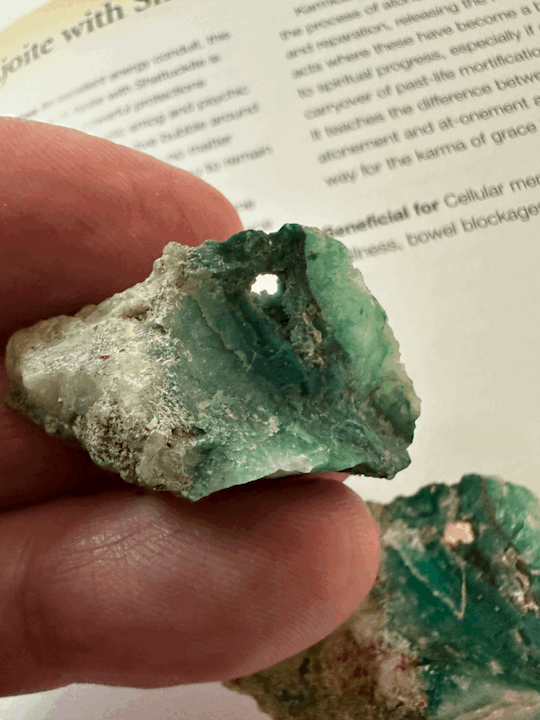
Ajoite-Shattuckite Fusion
A Synergistic Gem
Weighs 7.3 Grams
Measures 40mm x 20mm x 10mm
This is the actual crystal that appears on page 163 of the New Crystals and healing stones by Judy Hall.
Please follow this link to see it on Ebay :- https://www.ebay.co.uk/itm/235542251357
The auction will finish at 5pm Saturday 4th May
Within the unique composition of Ajoite-Shattuckite, a rare and potent stone emerges, seamlessly blending the qualities of both minerals. This fusion creates a harmonious synergy that transcends individual properties, offering a profound tool for personal and spiritual development.
Ajoite, with its ethereal presence and heart-throat chakra connection, infuses the stone with the power of heartfelt communication and emotional tranquility. Phantoms within crystals reveal its South African origin, showcasing hues ranging from intense turquoise to soft, creamy tones. Ajoite's healing touch soothes emotional wounds, fostering joy and acceptance amidst life's complexities.
Complementing Ajoite, Shattuckite adds its activating influence on the throat and third eye chakras. This enhances psychic abilities and facilitates clear expression of spiritual insights. Moreover, Shattuckite's protective aura shields against unwanted influences during channeling and serves as a potent ally in automatic writing, amplifying intuition.
Together, the Ajoite-Shattuckite fusion offers a holistic approach to well-being and spiritual growth. Beyond their individual virtues, this combination stone embodies a synthesis of emotional healing, clear communication, and psychic empowerment. Furthermore, it acts as a reliable guardian against electromagnetic radiation, ensuring energetic harmony in its surroundings.
In essence, the Ajoite-Shattuckite fusion embodies a harmonious blend of energies, inviting individuals to explore the depths of their emotions, express their truths with clarity, and journey towards spiritual enlightenment with confidence and protection.
This crystal is part of the Judy Hall's crystal collection that is being sold on behalf of Judy’s daughter Jeni. It will comes with a card that guarantees it was part of Judy's personal collection.
A percentage of the sale price will be donated to the Samaritans Charity No: 219432 in memory of Judy Hall. Samaritans provides a safe place for people to talk, round the clock, every single day of the year.
JH / EB 2
#Judy Hall's crystals#New Crystals and Stones Judy Hall#Ajoite & Shattukite#KSC Crystals#Crystal For Healing
1 note
·
View note
Text

We have gone bracelet mad today, with over twenty new ones to choose from.
These are a lovely gift, and great as a stocking filler for Christmas.🎄
Please follow this link to see our wide range: https://www.ksccrystals.com/crystal-bracelets-90-c.asp
#crystals for healing#healing crystals#crystals that heal#rare crystals#crystal therapy#crystals for sale uk#high vibration crystals#crystals for crystal healing#ksc crystals#keith birch
1 note
·
View note
Link
Check out this listing I just added to my Poshmark closet: Stunning 925 Sterling Silver Labradorite Rose Quartz Necklace.
0 notes
Link
Check out this listing I just added to my Poshmark closet: 925 Sterling Abalone Rose Quartz Amethyst Necklace.
0 notes
Link
Check out this listing I just added to my Poshmark closet: Stunning 925 Sterling Silver Cuff Bracelet.
0 notes
Link
Check out this listing I just added to my Poshmark closet: 925 Sterling Abalone Rose Quartz Amethyst Necklace.
0 notes
